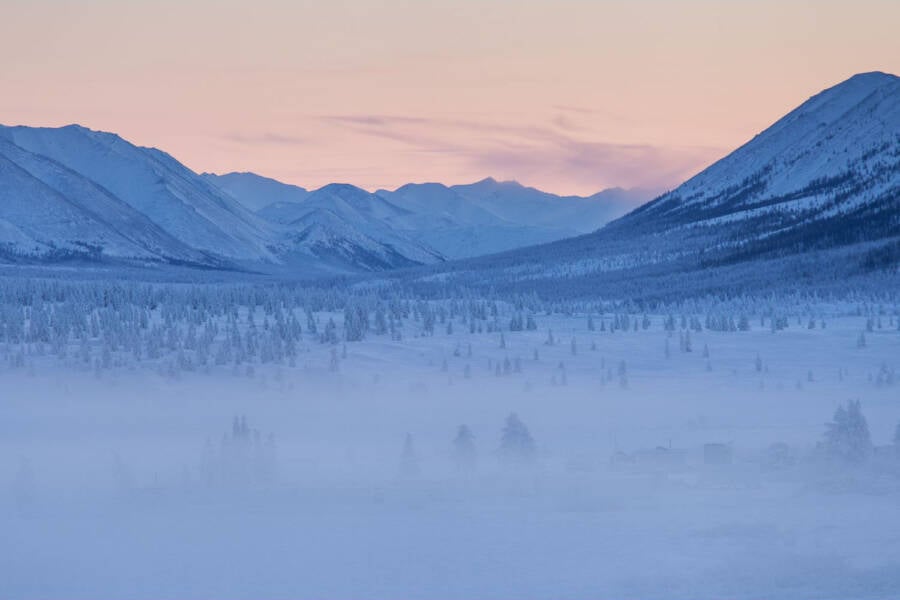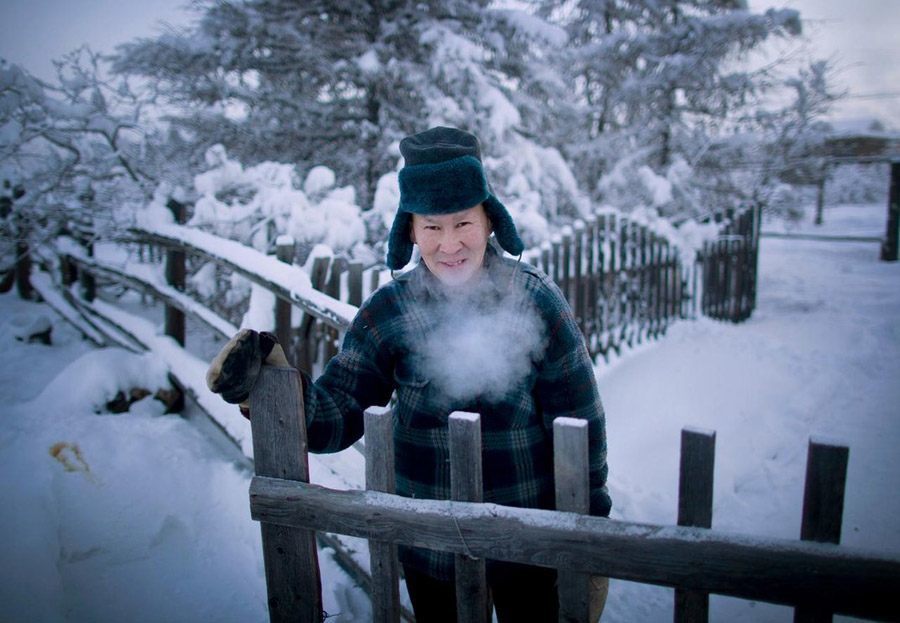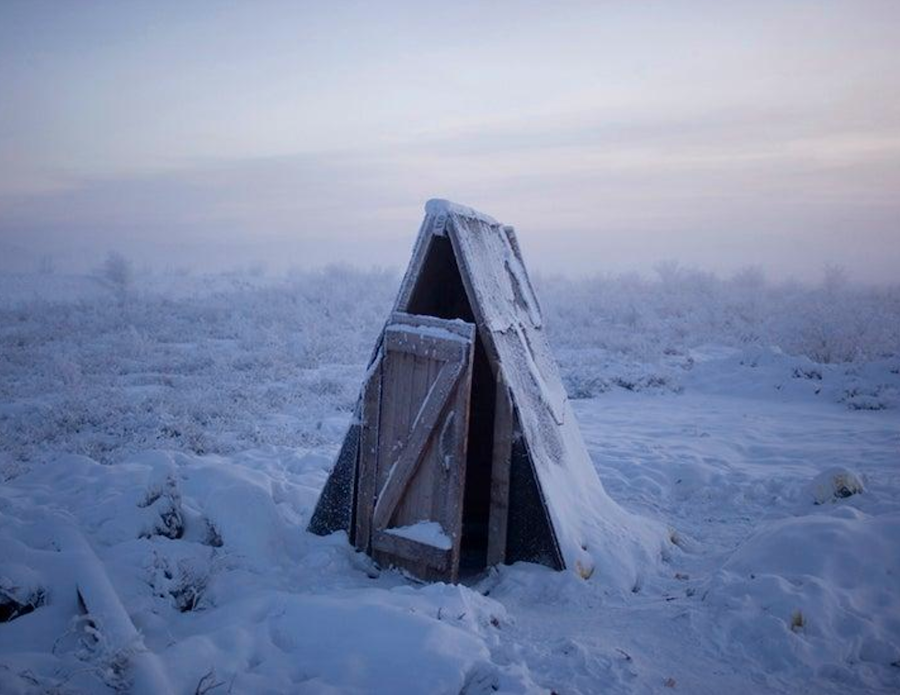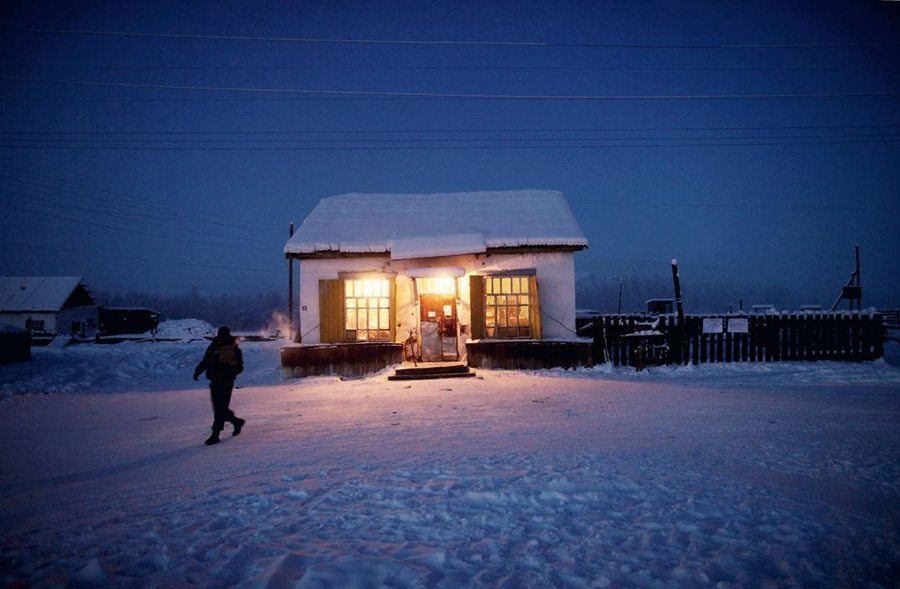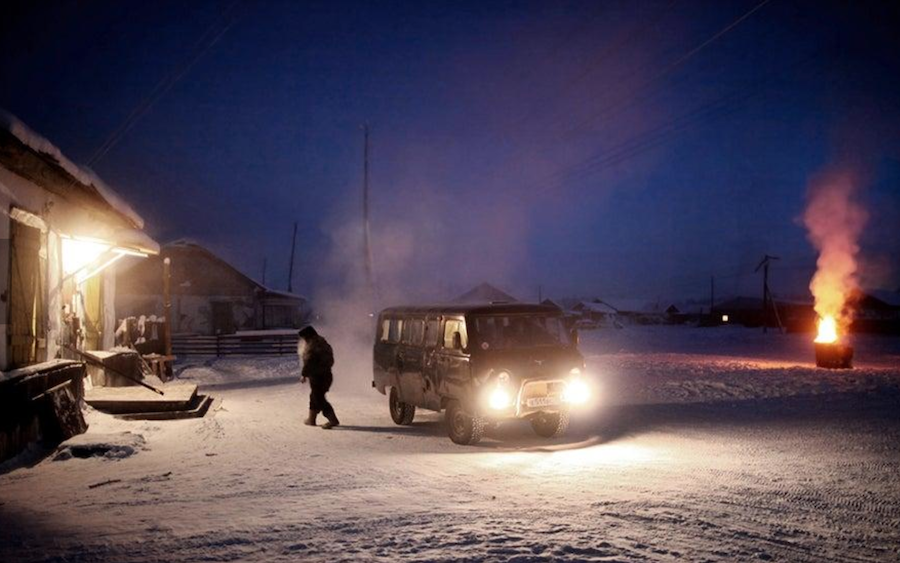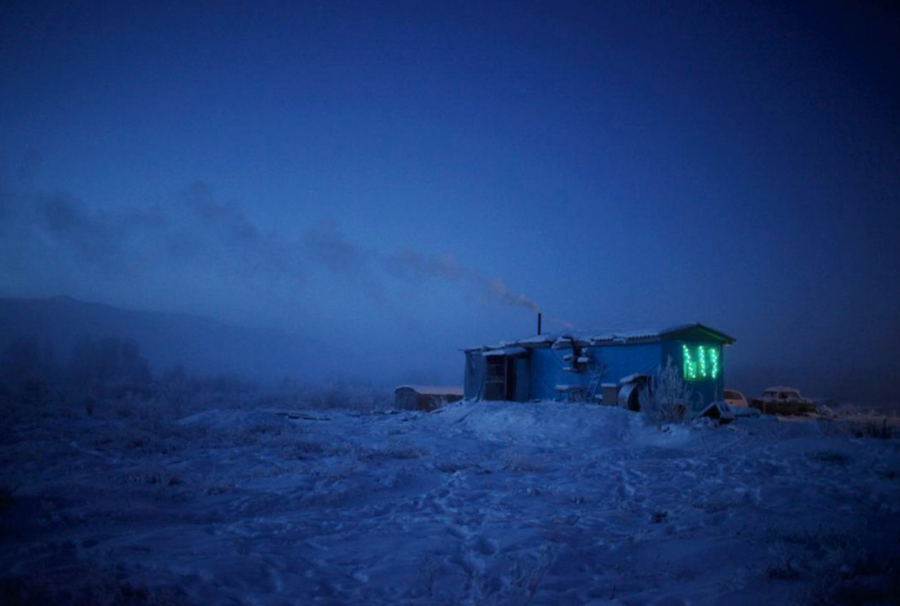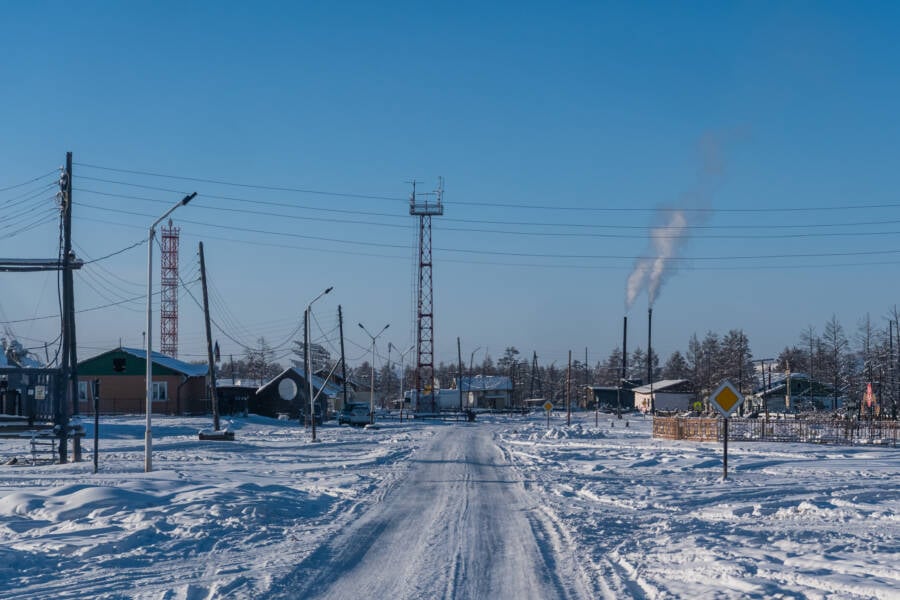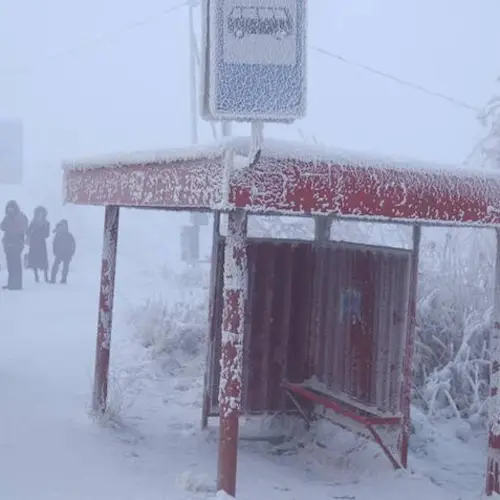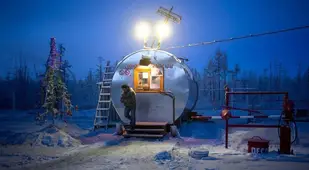Located near the Arctic Circle, the city of Oymyakon, Russia is the coldest inhabited place on Earth. Winter temperatures average around -58°F — and only 500 residents brave the chill.
No matter how chilly it gets where you live, it probably can’t compare to Oymyakon, Russia. Located just a few hundred miles from the Arctic Circle, Oymyakon is the coldest city in the world.
New Zealand photographer Amos Chapple made a daring expedition to Oymyakon and its nearest city, Yakutsk, to document the life of the region's inhabitants — and to find out what it's really like to live in a place that averages winter temperatures around -58° Fahrenheit.
Everyday Life In The World's Coldest City
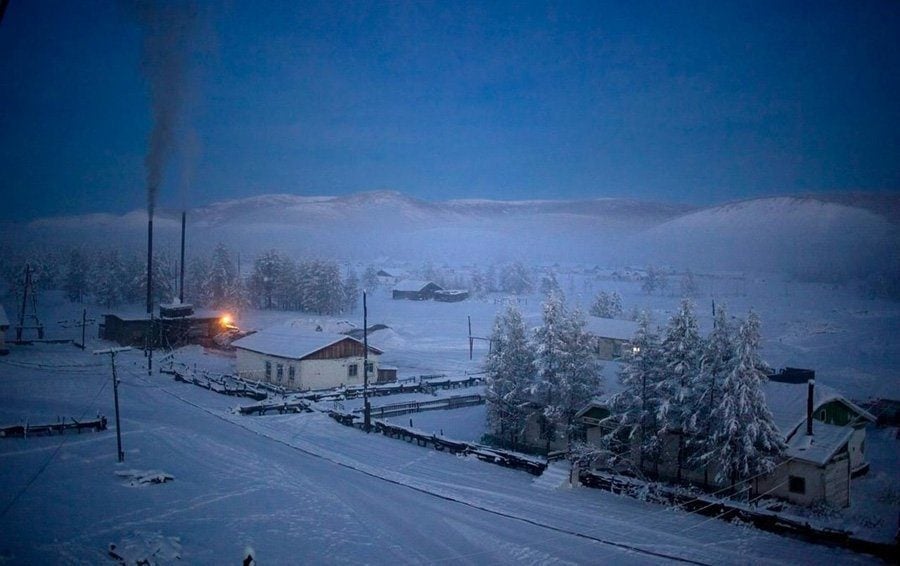
Amos Chapple/SmithsonianOymyakon's heating plant runs around the clock with an ever-present plume of smoke rising into the winter sky.
Known as "The Pole of Cold," Oymyakon is the coldest populated region on Earth and claims only 500 full-time residents.
Most of these residents are Indigenous people known as the Yakuts, but some ethnic Russians and Ukrainians also live in the area. During the Soviet era, the government convinced many laborers to move to the region by promising them high wages for working in a harsh climate.
But when Chapple visited Oymyakon, he was struck by the emptiness in the town: "The streets were just empty. I had expected that they would be accustomed to the cold and there would be everyday life happening in the streets, but instead people were very wary of the cold."
It's certainly understandable when you consider how dangerous the cold can be. For instance, if you were to walk outside naked on an average day in Oymyakon, it would take approximately one minute for you to freeze to death. It's no wonder why many of the people Chapple saw outside were rushing to get inside as soon as they could.
There's just one store in Oymyakon, but there is also a post office, a bank, a gas station, and even a small airport. The town also has its own schools. Unlike other places around the world, these schools don't even consider closing unless the weather drops below -60°F.
Every structure in Oymyakon is built on underground stilts to counter the instability of the permafrost that runs 13 feet deep. A nearby thermal spring remains just unfrozen enough for farmers to bring their livestock to drink.
As for the humans, they drink Russki Chai, which literally translates to "Russian Tea." This is their term for vodka, and they believe it helps them keep warm in the cold (along with multiple layers of clothing, of course).
The hearty meals that the locals eat also help them stay toasty. Reindeer meat is a staple, as is fish. Sometimes chunks of frozen horse blood also find their way into meals.
As cozy as life may be inside their homes, residents do need to step outside every so often — and so they need to be prepared. They usually leave their cars running overnight so they don't completely seize up — and even so, the driveshafts sometimes freeze.
But despite the hardships of life in Oymyakon, Soviet Russia still managed to persuade people to pack up and move to the coldest city in the world. And clearly, some of their descendants are sticking around.
The Workers, Resources, And Tourism In Oymyakon, Russia

Amos Chapple/SmithsonianThe snowy road to Oymyakon, Russia.
During the Soviet era, workers moved to remote areas like Oymyakon and Yakutsk due to the promise of wealth and bonuses awarded by the government. These people arrived to mingle with the Yakuts, as well as laborers who remained from the gulag system.
An eerie reminder of this past, the highway between Oymyakon and Yakutsk was constructed with gulag prison labor. Known as the "Road of Bones," it's named for the thousands of people who died building it.
As you can imagine, it takes an immense amount of mental and physical stamina to work outdoors in a place like this — even if you choose to live in Earth's coldest city. Yet people do it every day. Lumberjacks, miners, and other outdoor laborers do their jobs while trying to stay as warm as they can.
The climate makes it impossible to grow crops of any kind, so the only kind of farming is livestock. Farmers must take extra care that their animals keep warm and have access to unfrozen water.
Other than farms, a Russian corporation called Alrosa has its headquarters in the region. Alrosa supplies 20 percent of the world's rough diamonds — and it's the world's largest producer in terms of carats.
Diamonds, oil, and gas are all plentiful in the region, which helps explain why there's money to be made there — and why the Yakutsk city center is a wealthy and cosmopolitan one where curious travelers are eager to visit.
Surprisingly, tourism also exists in Oymyakon, the coldest city in the world. While summer is certainly more tolerable than winter — with temperatures occasionally reaching up to 90°F — the warm season is also very short and lasts just a couple of months.
Daylight also varies widely throughout the year, with about three hours in the winter and 21 hours in the summer. And yet about 1,000 brave travelers visit this tundra every year in search of adventure.
One site touting the glory of Oymyakon proclaims:
"Tourists will ride Yakut horses, drink vodka from ice cups, eat raw liver of foals, slices of frozen fish and meat served exceptionally cold, enjoy hot Russian bath, and immediately after – crazy Yakut cold!"
If you were fascinated by this look inside Oymyakon, Russia, the coldest city on Earth, check out the Swedish hotel made out of ice and the 17 most unbelievable places on Earth.


